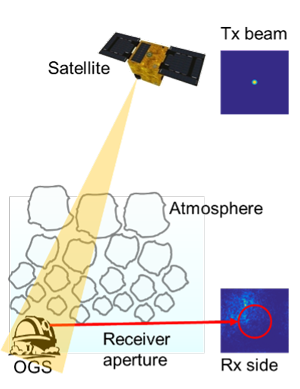Successful International Joint Experiment Between Japan and Germany in the Field of Space Optical Communication Using a Small Satellite
~ NICT's optical ground station successfully received downlink light from DLR's small satellite-mounted optical terminal (OSIRISv1) ~
March 25, 2021
National Institute of Information and Communications Technology
Points
- Successful experiment to receive downlink light at NICT optical ground station from DLR optical terminal mounted on Univ. of Stuttgart’s Flying Laptop satellite
- Succeeded in the initial experiment of the newly developed atmospheric turbulence measuring device and simple optical ground station for future optical ground station technology enhancement
- Acquired valuable data to contribute to the research and development of future space optical communication technology
Background
Results of this experiment campaign






Future prospects
Role sharing of each institution
- NICT: Development of measuring instruments for optical ground stations and optical reception experiments, and preparation for the experiments in Japan
- DLR: Development and operation of OSIRISv1
- University of Stuttgart: Development, integration and operation of the Flying Laptop satellite
Supplementary material
Current NICT activities in the field of space optical communications
Tracking system implementation in this experiment [2]
Pointing systems on the satellite side
Glossary




Technical Contact
Kolev Dimitar
Space Communications Laboratory
Wireless Networks Research Center
NICT
Tel: +81-42-327-5395
E-mail:























Media Contact
Press Office
Public Relations Department
NICT
E-mail:





















